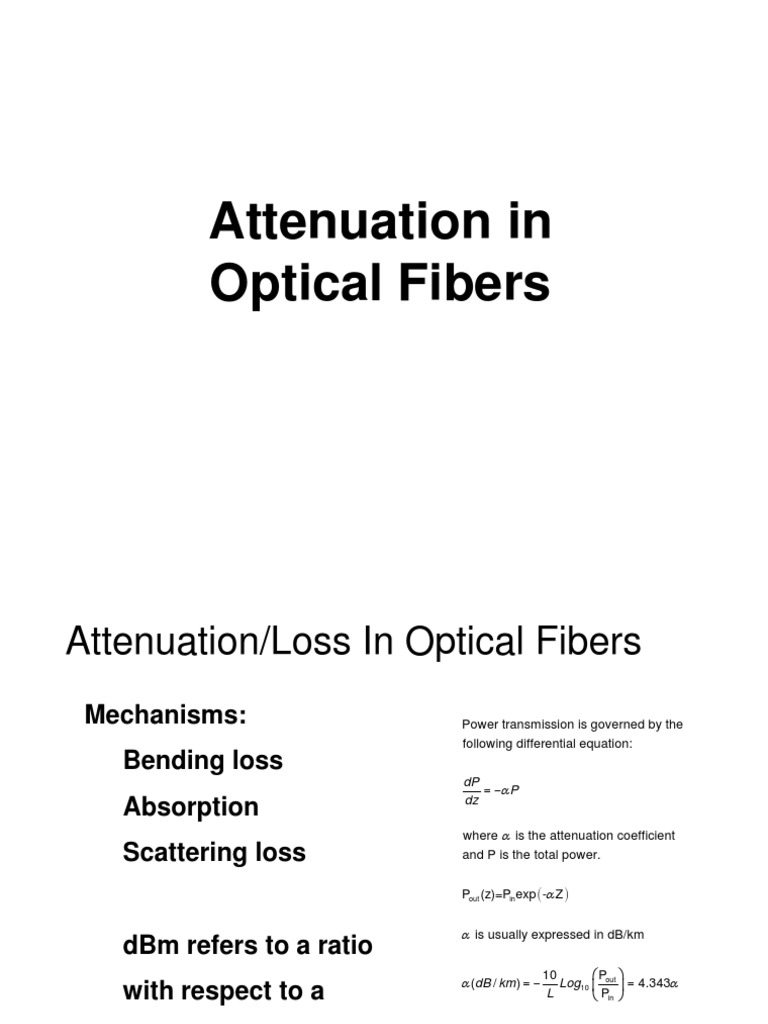Optical fiber technology has ushered in an era of high-speed communication, transforming the way data is transmitted across vast distances. However, one persistent challenge in optical fiber systems is attenuation, which results in signal loss as light travels through the fiber. Understanding how to overcome optical fiber attenuation is crucial for maintaining the integrity and efficiency of communication networks. This discussion will delve into the intricacies of attenuation in optical fibers and explore various methodologies to mitigate its impact.
To grasp the nuances of optical fiber attenuation, one must first comprehend the fundamental principles underlying this phenomenon. Attenuation in optical fibers occurs due to several factors, including scattering, absorption, and macrobending losses. The intrinsic properties of the fiber material, alongside extrinsic environmental influences, contribute to these losses. Scattering arises from imperfections and impurities in the fiber, while absorption occurs due to the conversion of optical energy into heat. Macrobending losses manifest when the fiber is bent at sharp angles, causing additional signal degradation.
Given these considerations, one effective strategy for overcoming optical fiber attenuation is the meticulous selection of fiber materials. Advanced manufacturing techniques have led to the development of fiber types with lower attenuation coefficients. For example, using high-purity silica fibers can significantly reduce absorption losses. These fibers often exhibit minimal scattering due to their consistent refractive index and reduced impurity levels. By leveraging these advanced materials, engineers can create optical fibers that maintain signal quality over extended distances.
Furthermore, optimizing the design of the optical fiber can also mitigate attenuation. Employing a multi-mode or single-mode fiber can dramatically influence the transmission capacity and loss characteristics. Multi-mode fibers allow multiple light paths, which can reduce the chance of signal distortion, albeit with greater attenuation over long distances. Conversely, single-mode fibers, characterized by a smaller core diameter, facilitate a single light path, drastically reducing modal dispersion and yielding lower attenuation rates. Selecting the appropriate fiber type based on specific application requirements is paramount for effective signal transmission.
In addition to fiber selection and design, utilizing signal amplification technologies can effectively counteract the detrimental effects of attenuation. Optical amplifiers, such as Erbium-Doped Fiber Amplifiers (EDFAs), play a pivotal role in enhancing signal strength. These devices operate by injecting a small amount of energy into the optical signal, thereby compensating for losses accumulated during transmission. By strategically placing amplifiers along the transmission path, network designers can ensure that signals remain robust over long distances, thereby overcoming attenuation challenges.
Moreover, incorporating advanced modulation techniques can further enhance system resilience against attenuation. Modulation methods, such as Phase Shift Keying (PSK) or Quadrature Amplitude Modulation (QAM), enable more efficient use of bandwidth. These techniques can encode more bits per symbol, increasing the throughput while maintaining signal integrity. As a result, they can effectively mitigate the effects of attenuation, allowing for higher data rates even in environments with significant loss.
The implementation of switchable optical routes offers another innovative approach to circumventing attenuation. Utilizing Dense Wavelength Division Multiplexing (DWDM) allows multiple signals to be sent simultaneously over the same optical fiber by employing different wavelengths. This multiplexing technique not only optimizes fiber capacity but also mitigates the impact of attenuation by allowing signals to be rerouted as needed. The dynamic nature of DWDM systems enhances the resilience of optical networks, ensuring reliable communication across varied conditions.
Real-time monitoring and management also play crucial roles in addressing optical fiber attenuation. Utilizing intelligent network management systems enables operators to detect and quantify signal degradation promptly. Such systems employ Optical Time Domain Reflectometry (OTDR) to assess the health of the fiber, identifying sections with increased attenuation and enabling targeted repairs. By proactively managing fiber infrastructure, networks can minimize downtime and maintain consistent service quality.
Finally, the future of optical fiber communications may involve the integration of emerging technologies, such as nanomaterials and photonic crystals, in fiber design. These materials have shown promise in promoting better light confinement and reducing scattering losses. As research in this field advances, the potential to overcome the limitations posed by current fiber technologies becomes increasingly feasible.
In conclusion, overcoming optical fiber attenuation necessitates a multifaceted approach encompassing the selection of materials, optimization of fiber design, the use of amplification and modulation techniques, the implementation of innovative routing solutions, and proactive management strategies. As the demand for high-speed communication continues to escalate, addressing attenuation challenges will be essential in harnessing the full potential of optical fiber technology. The journey to refine and enhance communication systems is not merely a technical pursuit but a testimony to human ingenuity in overcoming the limitations of nature.










